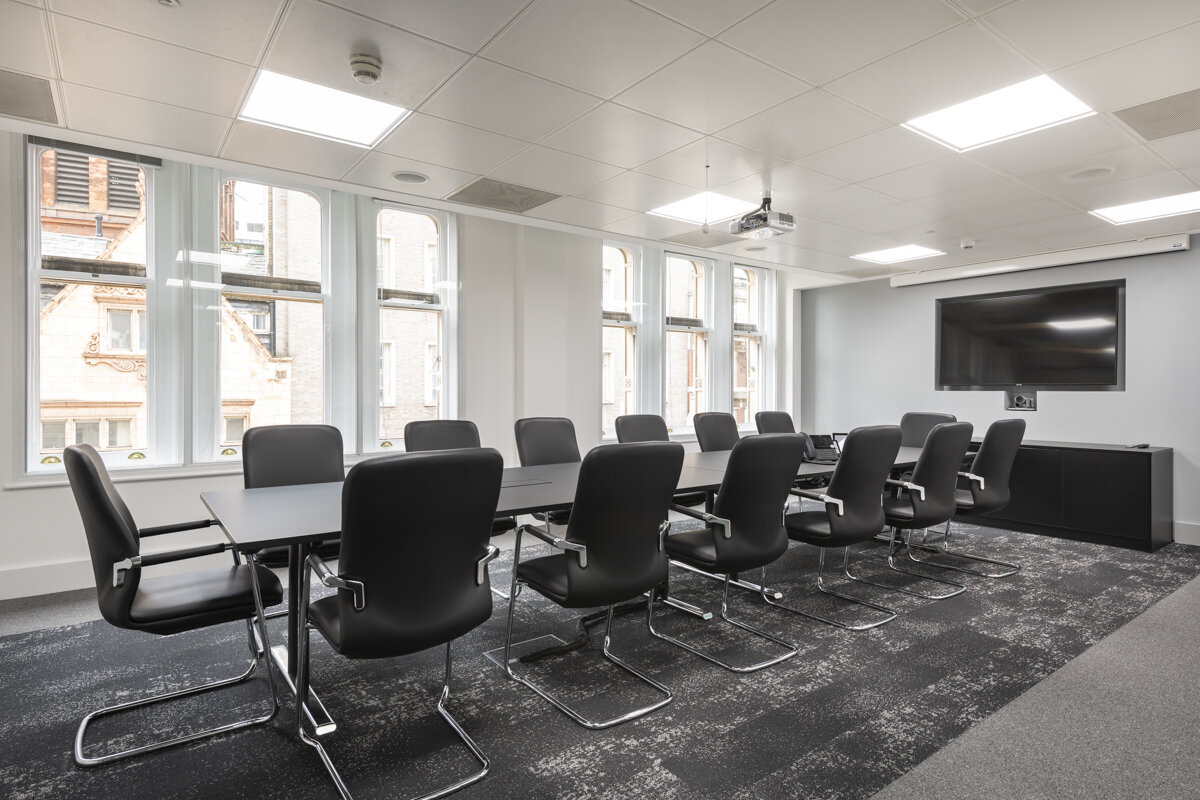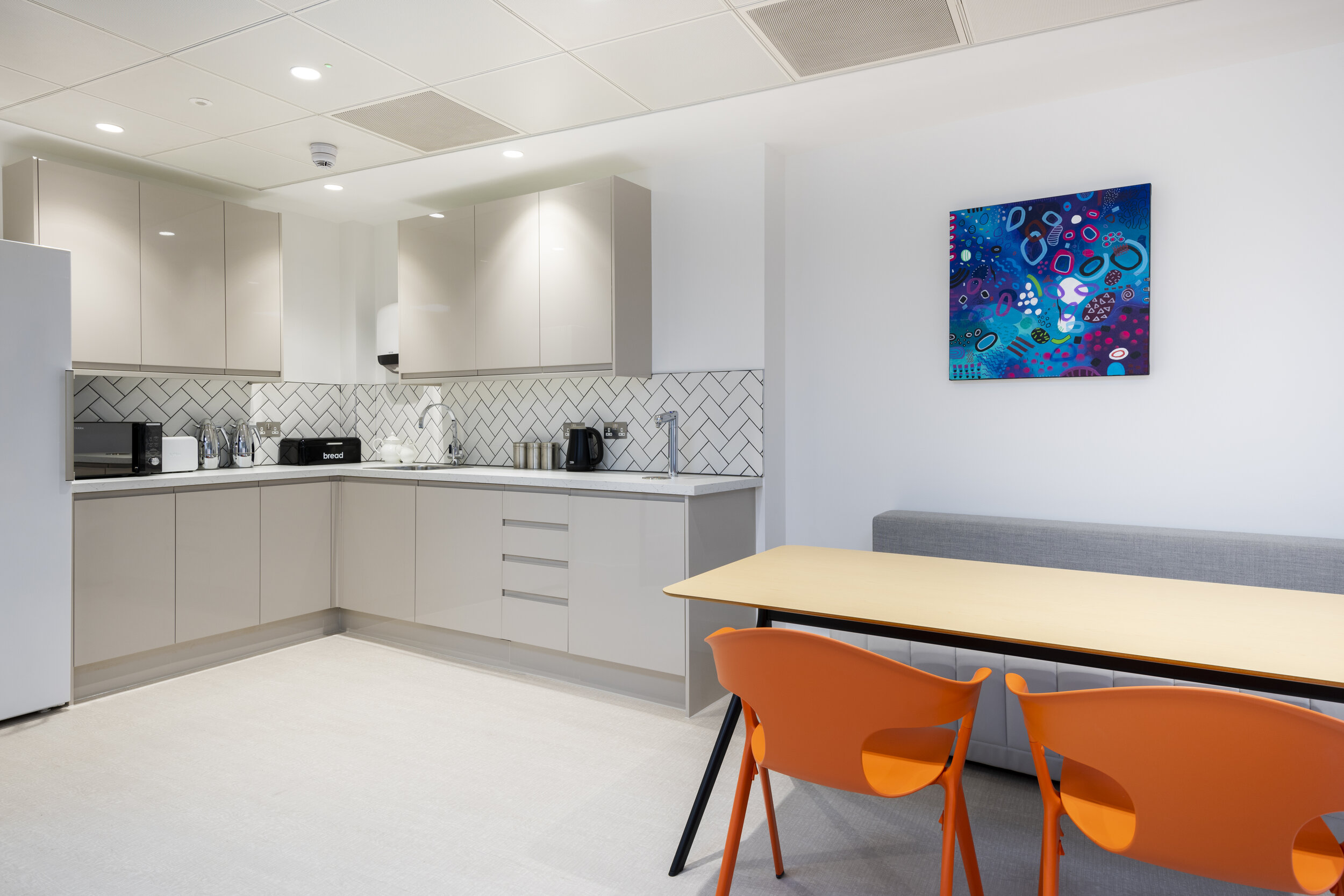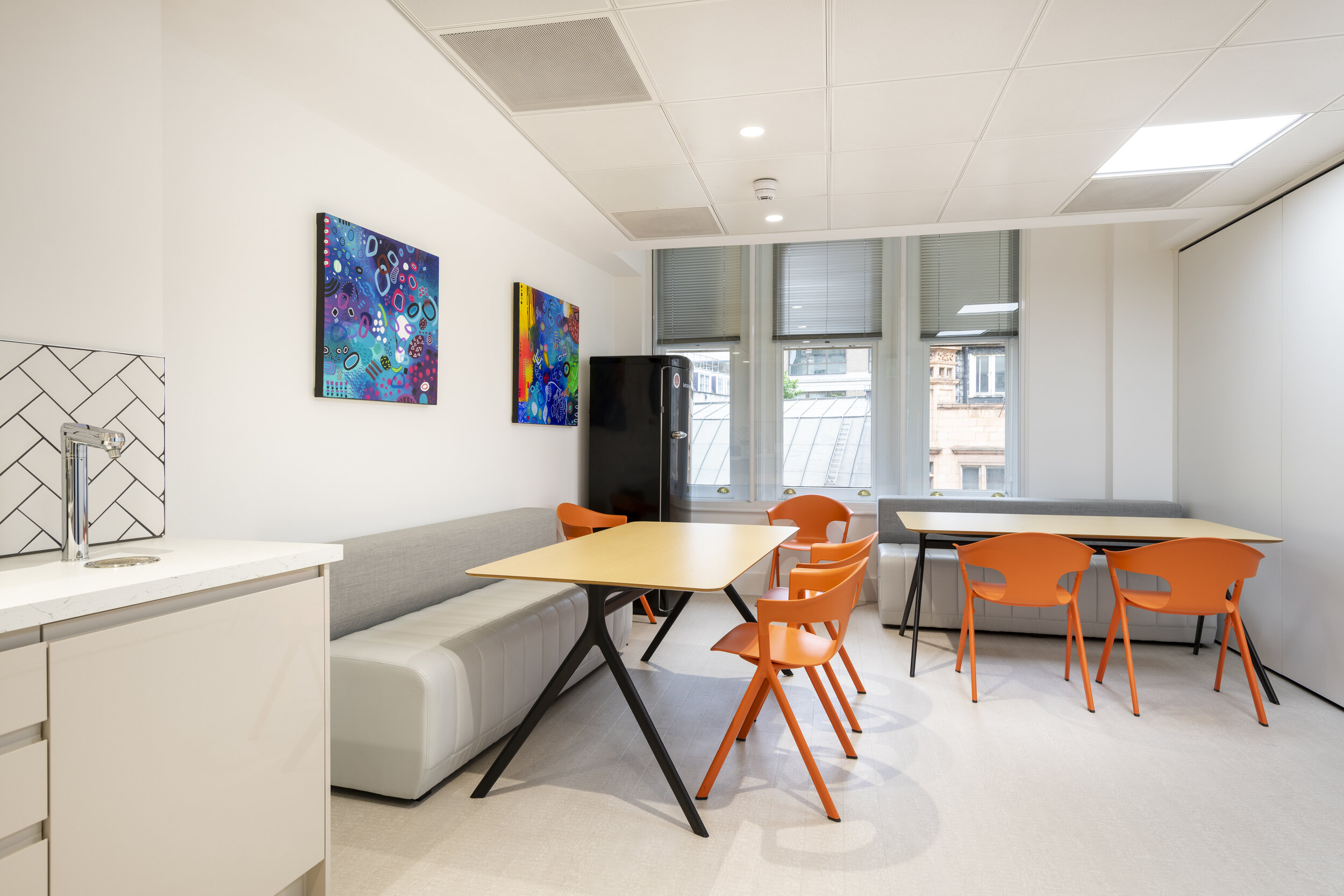As we enter the autumn, we at Cityspace are seeing an increasing number of clients now looking to the future and considering the evolving role of the office. As the restrictions imposed by the COVID-19 pandemic subside, firms are moving forward with plans of how to adapt to a hybrid working model and adopt a blended office approach to create the optimum mix of onsite and remote working.
A good example of this is a project we have recently completed for Butterfield Mortgages. Located on Cornhill in the heart of the City, the team at Cityspace designed and built new office interiors for Butterfield over two floors in 2017.
Recognising the success of remote working over the past 18 months, Butterfield made the decision to implement a blended office approach and maintain a percentage of staff working part-time from home on an ongoing basis.
Adopting a blended office approach has a number of advantages. In terms of functionality, it shifts the role of the office to become a hub for interaction and collaboration rather than just a place for individual work, which could now be accomplished by staff working from home. In addition, creating a blended office can also lead to a significant reduction in floor space. With the cost of rent in London second only to salary costs, this can obviously deliver significant savings to the bottom line.
As we enter the autumn, we at Cityspace are seeing an increasing number of clients now looking to the future and considering the evolving role of the office. As the restrictions imposed by the COVID-19 pandemic subside, firms are moving forward with plans of how to adapt to a hybrid working model and adopt a blended office approach to create the optimum mix of onsite and remote working.
A good example of this is a project we have recently completed for Butterfield Mortgages. Located on Cornhill in the heart of the City, the team at Cityspace designed and built new office interiors for Butterfield over two floors in 2017.
Recognising the success of remote working over the past 18 months, Butterfield made the decision to implement a blended office approach and maintain a percentage of staff working part-time from home on an ongoing basis.
Adopting a blended office approach has a number of advantages. In terms of functionality, it shifts the role of the office to become a hub for interaction and collaboration rather than just a place for individual work, which could now be accomplished by staff working from home. In addition, creating a blended office can also lead to a significant reduction in floor space. With the cost of rent in London second only to salary costs, this can obviously deliver significant savings to the bottom line.






